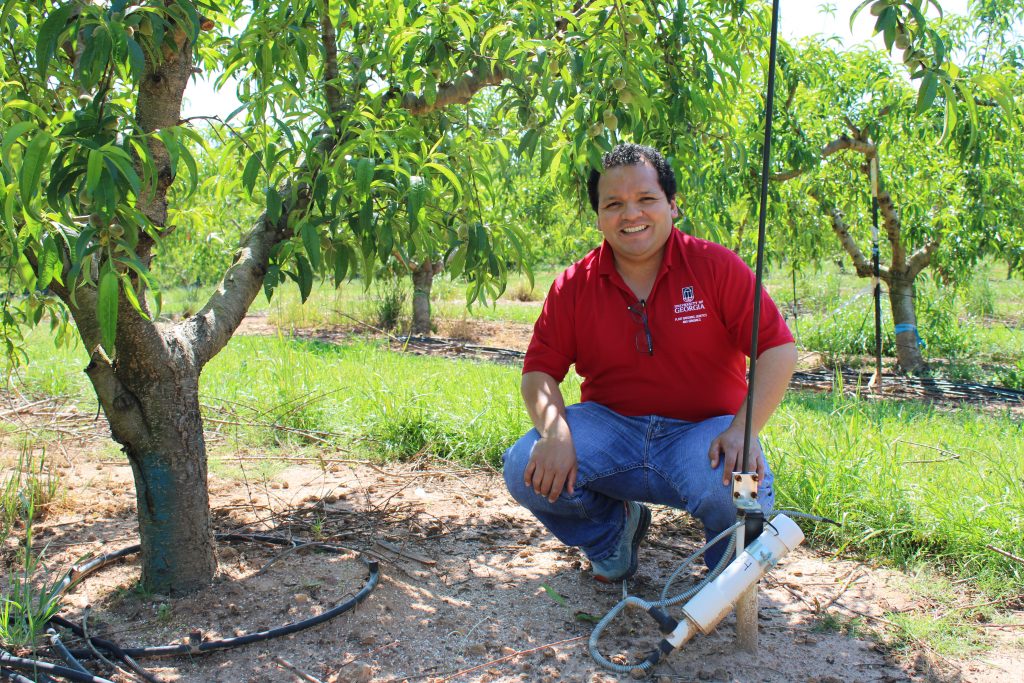
The University of Georgia (UGA) College of Agricultural and Environmental Sciences is ensuring peach production remains sustainable.
Dario Chavez and his research team in the Department of Horticulture on the UGA Griffin campus are improving irrigation and fertilization management practices for young peach trees in the Southeastern U.S.
Irrigation Management
Traditionally, producers adjusted irrigation scheduling on how much rainfall they received. That is not always predictable, however. Peach trees are fast-growing, and without rain they will be under stress, which can affect growth, fruit production and fruit quality.
“People always think the Southeast gets a lot of rain, but the rain we do get is very variable,” said Chavez. “Sometimes you have a lot of rain and other times you go for long periods without it.”
As part of his research, Chavez looked into irrigation versus the industry standard of no irrigation at the time of orchard establishment. He studied micro-sprinklers and drip irrigation and used a supplementary irrigation system from the time of establishment. It benefited tree growth, yield and plant-nutrient uptake compared with trees grown without supplemental irrigation. Drip irrigation was found to be more efficient than sprinkler irrigation.
“Plants are like babies — early growth and care serves them for many years to come,” said Chavez. “We looked at the difference it makes for starting with a new method compared to traditional methods. We found good results in production and yield, plant growth parameters and nutritional uptake. There are myriad differences across parameters between the two.”
The team recommends that growers irrigate as early as possible, as it benefits the entire orchard. Since drought is more common in Georgia, growers need to have a system in place to supplement watering as needed.
Fertilization
Fertilization is also required to give trees a boost in survival. Because fertilizer is one of the higher input costs, growers need to use the exact amount to help keep overall costs down. Chavez’s team used different ages of fertilizer based on the recommended rate — 200%, 100%, 50% and 25% — over several years to observe the impact it had on the nutrients available in the soil, plant and fruit. How did the trees respond to different rates of fertilization?
Research showed that the nutrient concentration for the plant’s leaves, stems and fruit did not change significantly based on the amount of fertilizer used.
“Once the plant fulfills the amount of nutrients it needs, it stops taking them in,” said Chavez.
For more information about Chavez’s research program, visit site.caes.uga.edu/chavezlab.









